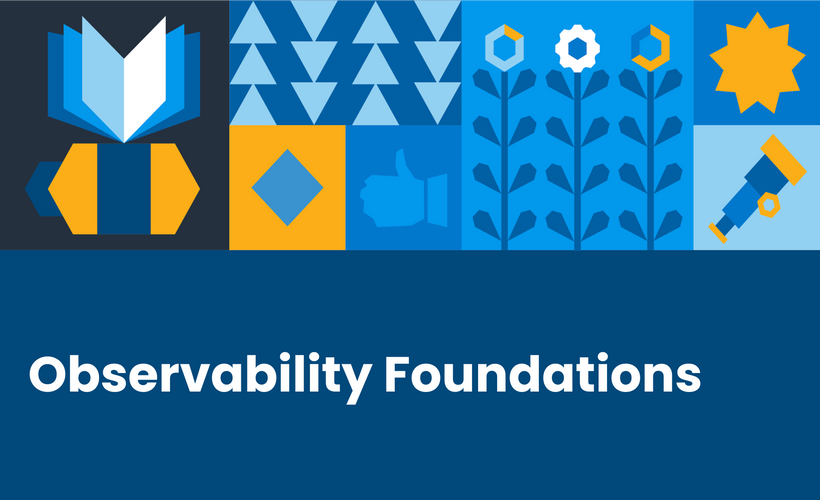
About the Course
What am I going to learn in this course?
Do you want to learn about how to gain deep visibility into your system state and make data-driven decisions with confidence? Maybe you want to understand how to leverage telemetry data to troubleshoot issues faster and improve system performance.
Modern systems can emit large amounts of of telemetry data, but without the right approach, that data can be overwhelming and difficult to interpret. Observability helps you by providing insight into not only what’s happening in your systems, but also why it's happening, along with how to use that knowledge to drive better business outcomes.
The most effective way to achieve observability is by understanding your telemetry—metrics, logs, and traces—so you can turn that raw telemetry into actionable insights. This course will teach you what observability is, the different telemetry signals, and how to use them to drive business value so you can improve system reliability, enhance customer experience, and implement observability-driven development with confidence.
How will I learn these things?
This 45-minute course will teach you about observability in 3 ways: videos, quizzes, and simulated scenarios.- Videos will explain concepts and explain/demonstrate examples of procedures.
- Quizzes give you the opportunity to test your knowledge.
- Scenarios give you the opportunity to make decisions in real-world examples based on what you learned.
What do I need before taking this course to be successful?
- Familiarity with—and, perhaps, some introductory experience with—how modern software systems work.
Course Categories
Course Instructor
-
Introduction to Observability
- So we have this dilemma...
- Get Started: What is Observability?
- Components of Observability
- Knowledge Check: Introduction to Observability
-
Telemetry: The Foundation of Observability
- Metrics
- Logs
- Traces
- Unifying Telemetry Data to Solve Problems
- Knowledge Check: Telemetry
-
Moving Toward Observability-Driven Development
- Moving Toward Observability-Driven Development
- What would you do in this scenario?
-
Summary: What's Next?
- Benefits, Challenges, and What's Next for Observability
- Tell us what you thought!
About the Course
What am I going to learn in this course?
Do you want to learn about how to gain deep visibility into your system state and make data-driven decisions with confidence? Maybe you want to understand how to leverage telemetry data to troubleshoot issues faster and improve system performance.
Modern systems can emit large amounts of of telemetry data, but without the right approach, that data can be overwhelming and difficult to interpret. Observability helps you by providing insight into not only what’s happening in your systems, but also why it's happening, along with how to use that knowledge to drive better business outcomes.
The most effective way to achieve observability is by understanding your telemetry—metrics, logs, and traces—so you can turn that raw telemetry into actionable insights. This course will teach you what observability is, the different telemetry signals, and how to use them to drive business value so you can improve system reliability, enhance customer experience, and implement observability-driven development with confidence.
How will I learn these things?
This 45-minute course will teach you about observability in 3 ways: videos, quizzes, and simulated scenarios.- Videos will explain concepts and explain/demonstrate examples of procedures.
- Quizzes give you the opportunity to test your knowledge.
- Scenarios give you the opportunity to make decisions in real-world examples based on what you learned.
What do I need before taking this course to be successful?
- Familiarity with—and, perhaps, some introductory experience with—how modern software systems work.
-
Introduction to Observability
- So we have this dilemma...
- Get Started: What is Observability?
- Components of Observability
- Knowledge Check: Introduction to Observability
-
Telemetry: The Foundation of Observability
- Metrics
- Logs
- Traces
- Unifying Telemetry Data to Solve Problems
- Knowledge Check: Telemetry
-
Moving Toward Observability-Driven Development
- Moving Toward Observability-Driven Development
- What would you do in this scenario?
-
Summary: What's Next?
- Benefits, Challenges, and What's Next for Observability
- Tell us what you thought!
